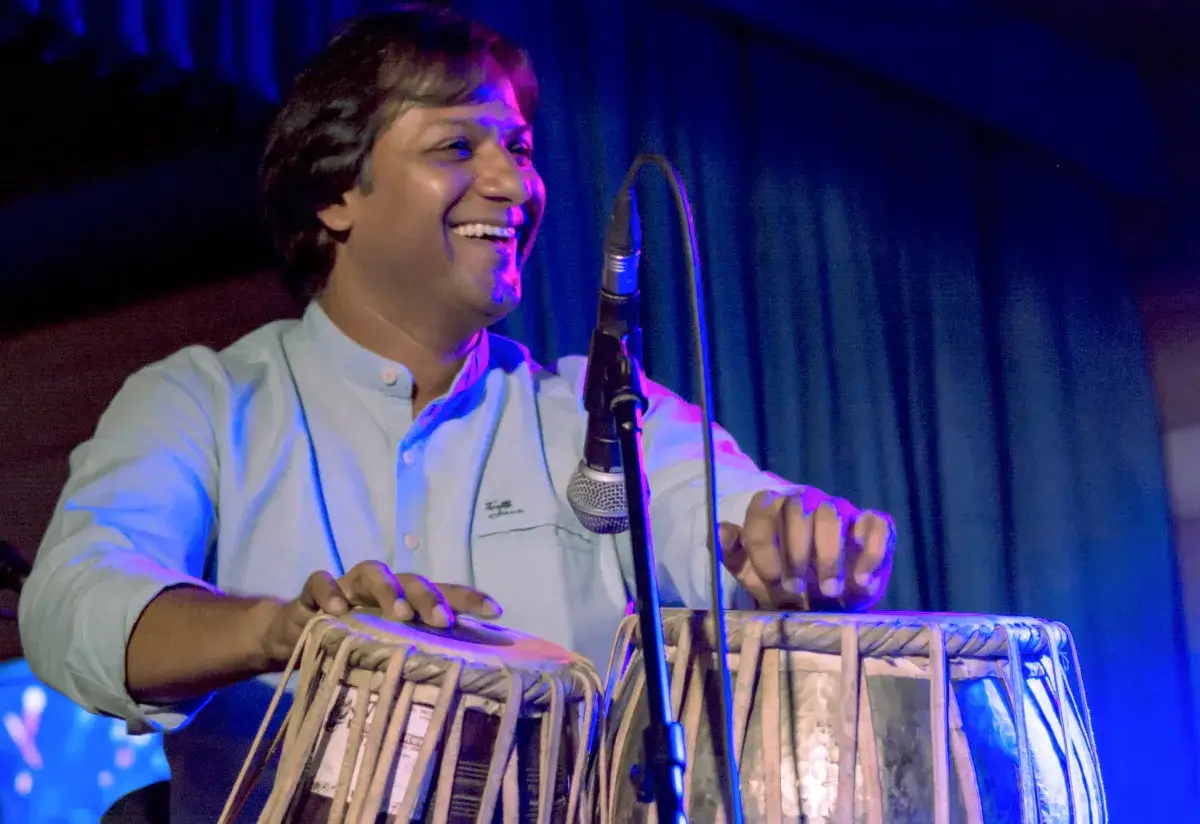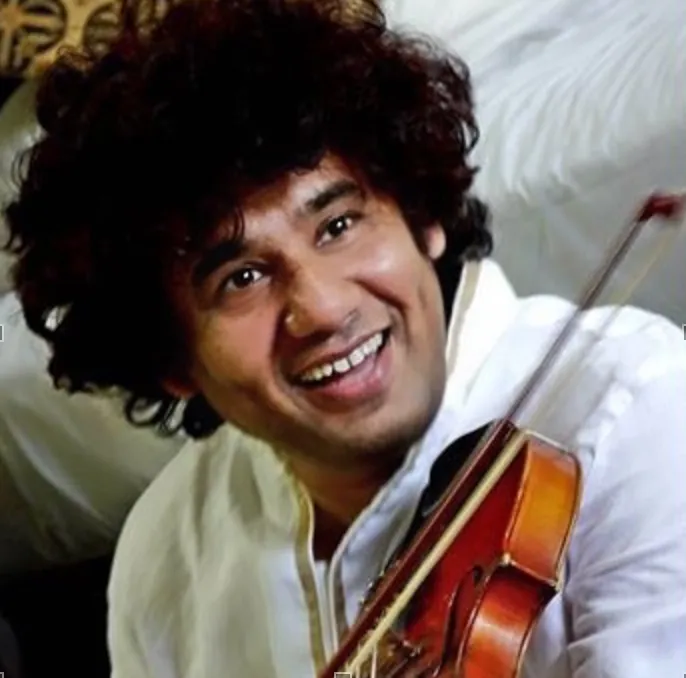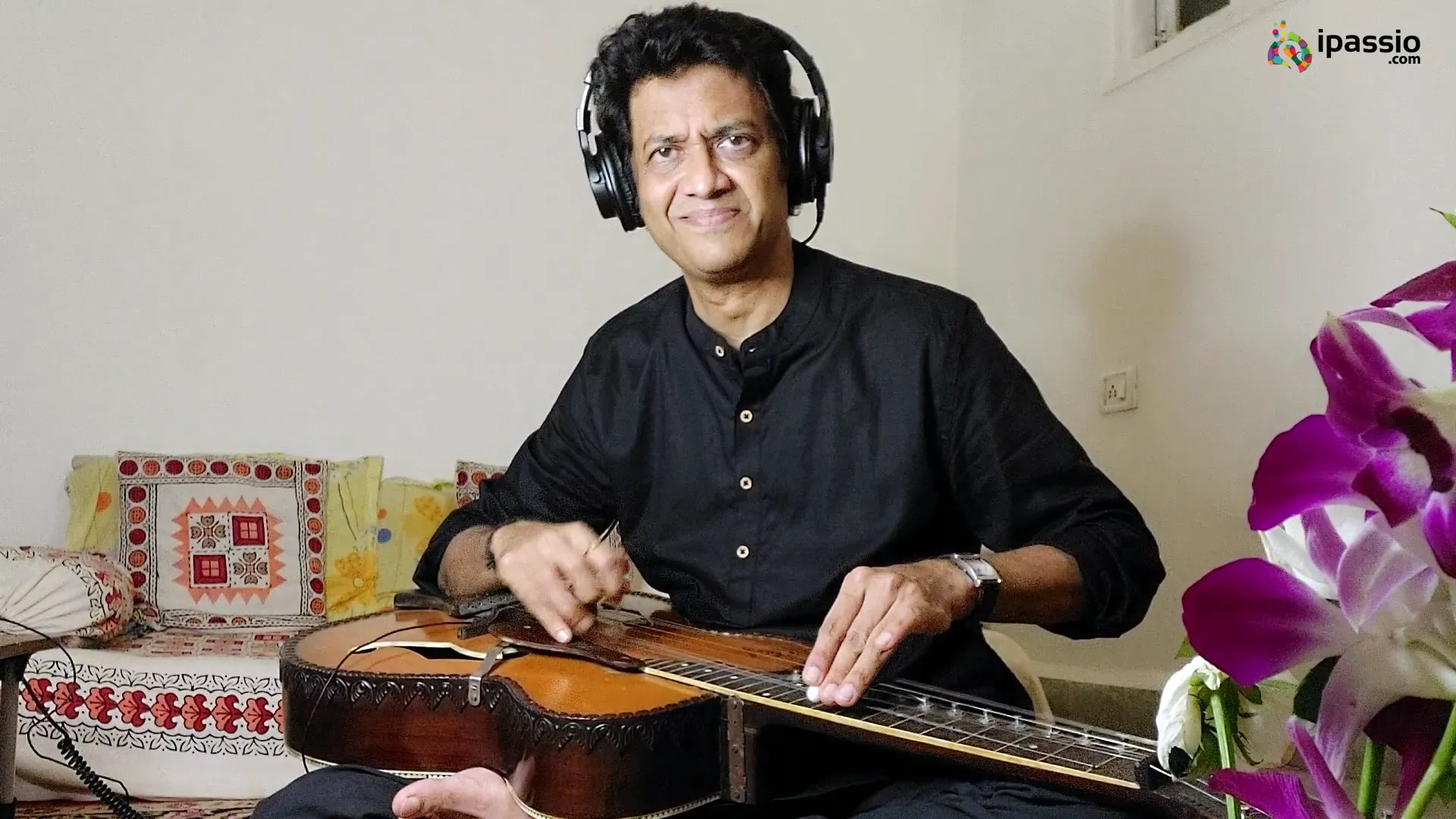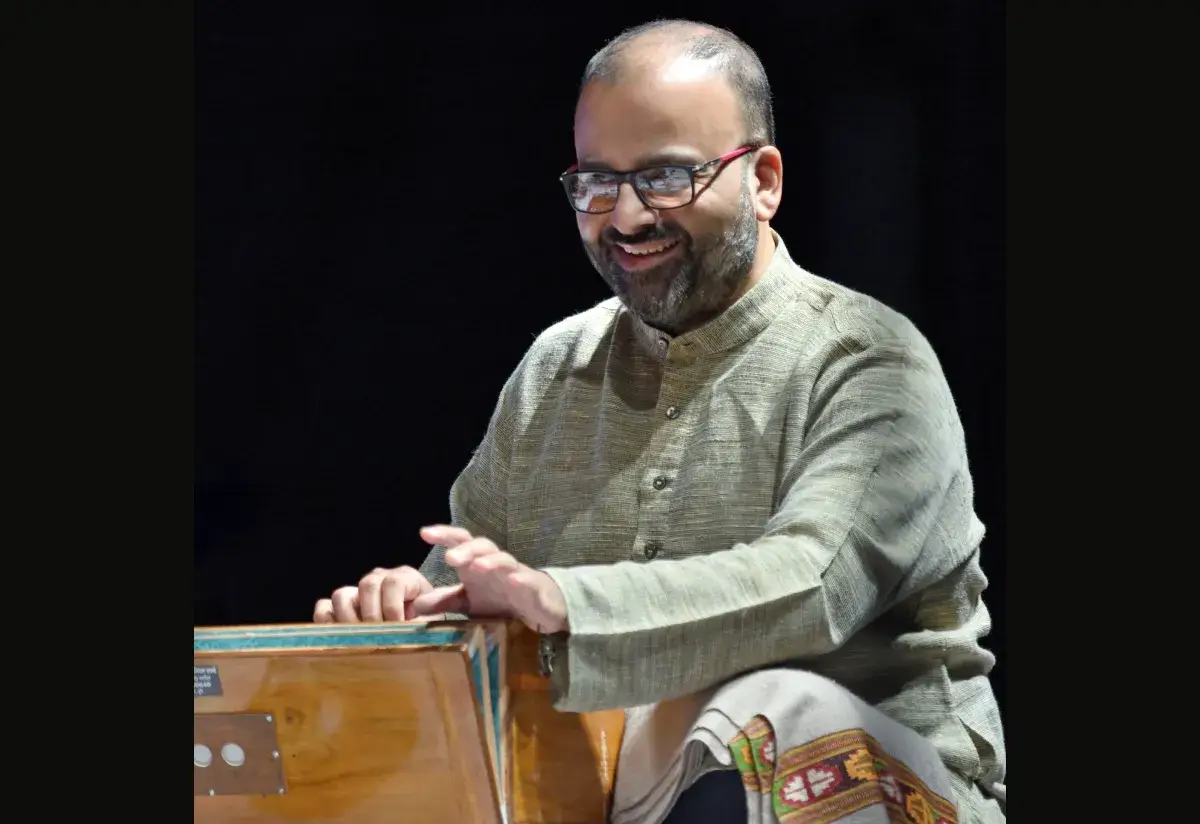Mandolin Overview
A mandolin is a plucked fretted chordophone or string musical instrument. It has four courses - each of two strings - thus making it eight strings. It belongs to the lute family of chordophones - characterized by a deep round and hollow back featuring a sound hole. The Lute instruments make sound through the vibration of the string.
With a clear, cheerful, and twangy Soprano timbre, the mandolin makes it an ideal accompaniment for diverse genres of music, including - Bluegrass, Folk, Country, Celtic/ Irish folk, Rock, Americana, Italian, and Mediterranean music, among others.
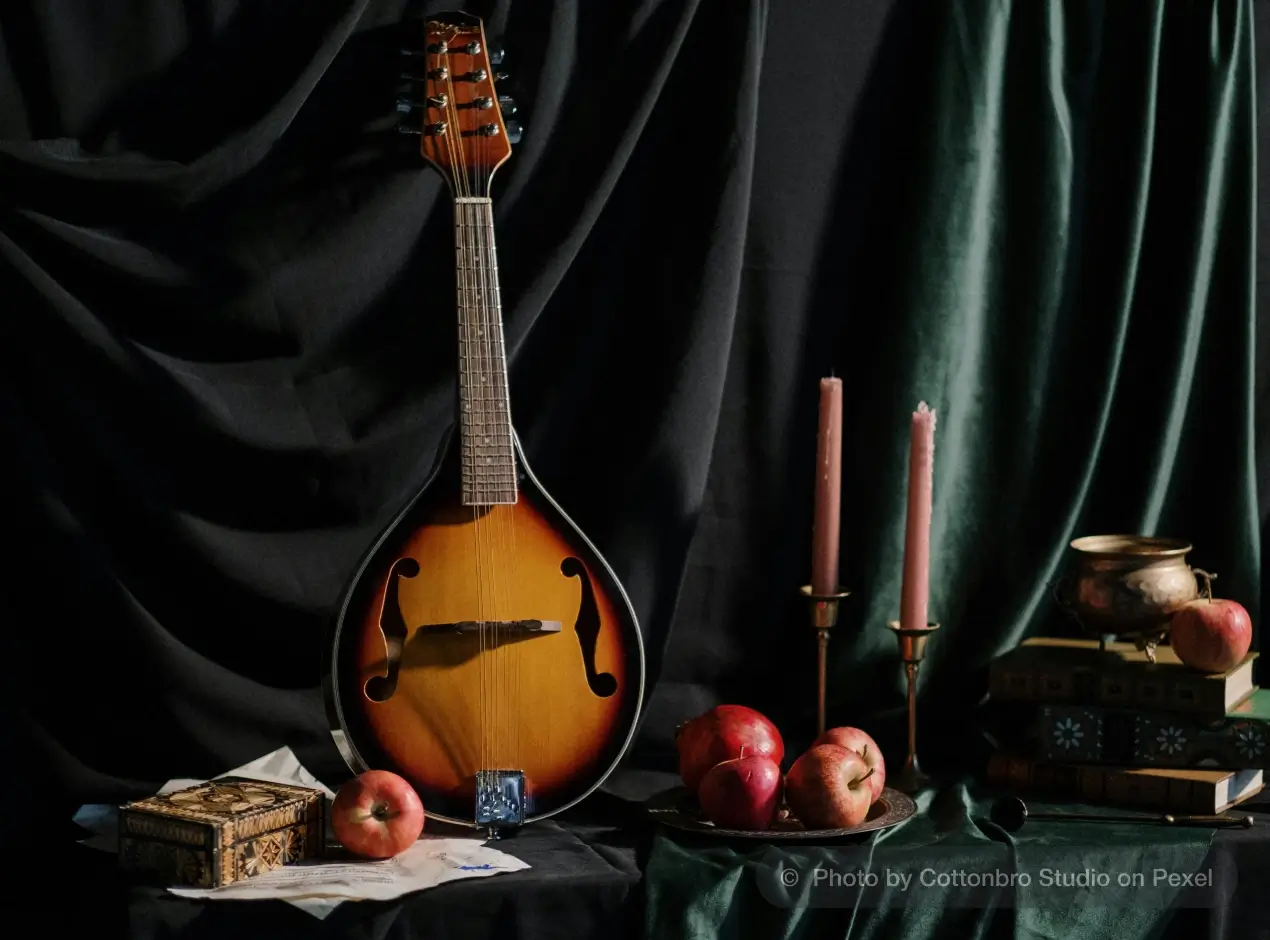 The mandolin is commonly tuned G-D-A-E, similar to a violin but at a higher pitch. There are different types of mandolins which vary in size, shape, ornamentation, and sound quality.
The mandolin is commonly tuned G-D-A-E, similar to a violin but at a higher pitch. There are different types of mandolins which vary in size, shape, ornamentation, and sound quality.
The mandolin was thoroughly used in Europe in the 18th century for traditional and folk music. And it resonates equally with contemporary musicians. Renowned mandolinists like Bill Monroe and Chris Thile have made the instrument popular, and its timeless appeal continues to influence contemporary music across genres.
Origin and History of Mandolin
The Mandora - a string instrument from the 16th century that was an integral part of musical traditions during the Renaissance - is said to be the forefather of the Mandolin.
Tracing the origin of Mandolins takes us back in time to the era when lute instruments were first noticed in the cave paintings from France with an estimated time of creation between 15,000 BC and 8500 BC. The initial versions had the frets missing and the pitch had to be controlled by pressing the strings. These instruments were played by plucking with one hand while using bows or rods to glide on the strings to create sound.
Gradually, more features and experimentations with materials, shapes, sizes, length of the neck, fretboards, and use of plectrums or picks - continued. The timbre varied with each specification and was picked up by musicians from different traditions.
According to the German musicologist - Cart Sachs - the lute instruments can be divided into long and short-necked lutes. Long-necked lutes include instruments such as tambura and sitar. While the short-necked variants include guitars and violins.
Ouds - the Arabic name for the lutes came from Persia. It spread due to Arabic conquests - from Arabia to North Africa and eventually to places like Spain. From there, it entered Europe. This Oud is the forefather of the Lute. An oud practitioner and philosopher named Zyriab is credited with having brought the instrument to Europe.
Thereafter, lutes in different forms developed all across Europe. The Renaissance lutes have double strings and quarters of four or five strings. The Baroque lute came in with a bunch of base strings. Like this lutes went through constant changes and improvisations at different times, places, and circumstances.
The way the mandolin instrument came to be - sometimes during the Renaissance, around the 15th or 16th century - the smaller versions of Lutes in France came to be known as the Mandora. The same instrument in Italy was known as the Mandola. The mandola - as it is used today is the bigger version of the Mandolin.
It is difficult to trace the exact stages of development from Lutes to Mandola to Mandolin. But around the 17th century, an even smaller version of Mandola was developed in Europe. That in Italy was named Mandolino - which means - small Mandola. And that is what is known to the world today as the Mandolin. And even then, the instrument existed in different forms and variations.
Types of Mandolin
There are many types of Mandolins out of which the three most common types are - the Neapolitan, the archtop, and the flat-backed mandolin.
Neapolitan Mandolin
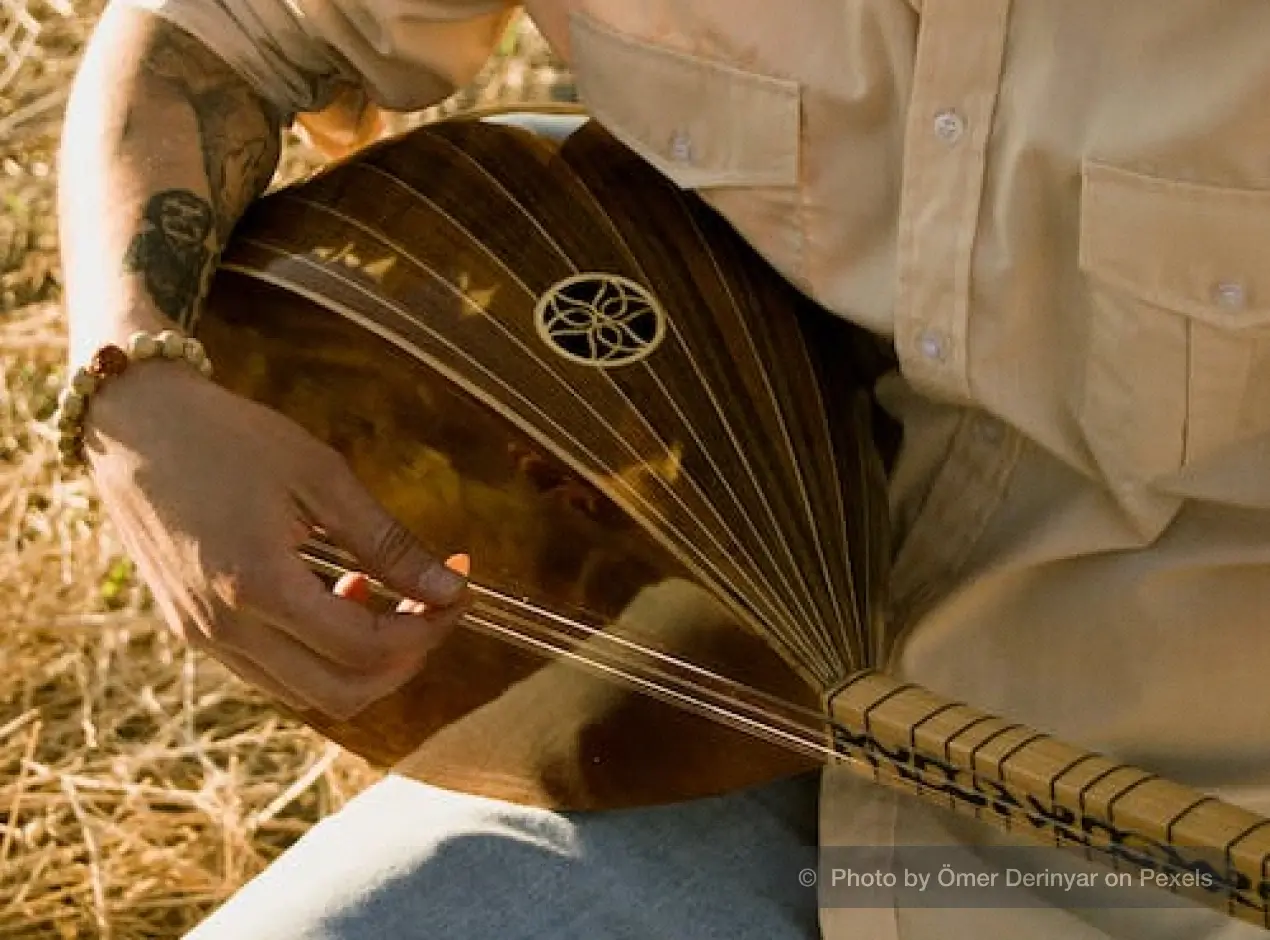
The Neapolitan Mandolin was invented in the 18th century in Naples, Italy, by a family of luthiers - the Vinaccia Family. Their improvisations to the design and mechanism of the instrument make it incredibly popular. This came to be known as the Neapolitan Mandolin, named after the city.
A deep bowed back with individual ribs shaped like an almond. As opposed to the Lutes that used gut strings, Nepolital Mandolins used steel strings. The Neapolitan Mandolins become extremely popular in Italian folk and classical music. Mandolins reigned stronger in the 19th century with renowned classical musician - Beethoven composing music for Mandolin.
Archtop Mandolin
The archtop mandolin, a distinctive member of the mandolin family, has its roots in the late 19th and early 20th centuries. It evolved from earlier mandolin designs and innovations in instrument-making during the Jazz Age. The concept of an arched or carved top, inspired by archtop guitars, was applied to mandolins to enhance their volume and projection for louder musical settings, such as jazz bands.
The defining feature of the archtop mandolin is its arched or carved top, typically made from spruce or another tonewood. Archtop mandolins often feature F-shaped sound holes, similar to those found on violins and other archtop instruments. The back and sides of an archtop mandolin are usually arched as well, contributing to the overall design's aesthetic appeal and acoustic characteristics.
Flat-backed Mandolin
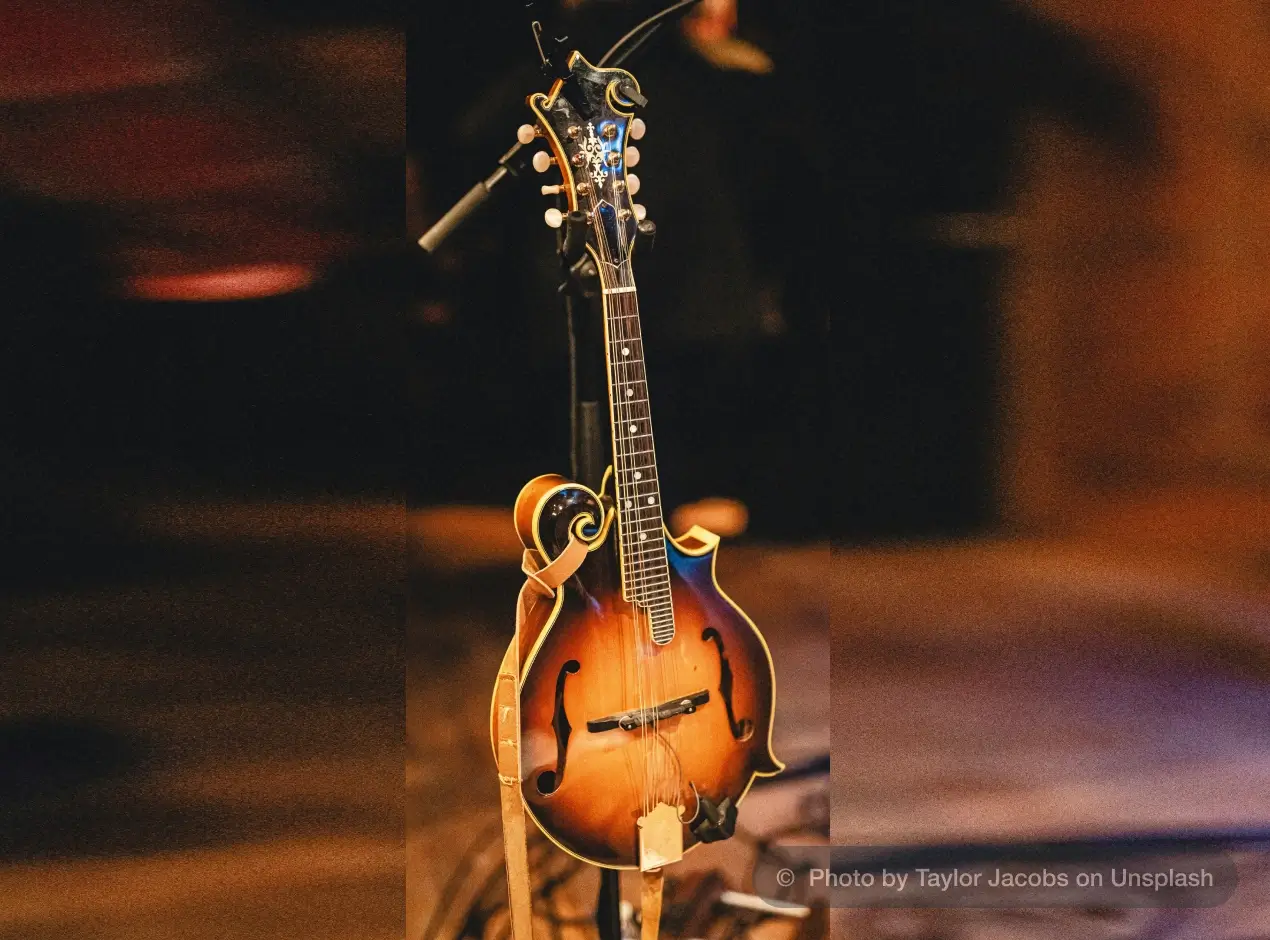
The flat-backed mandolin was invented in America in the late 19th century. The mechanism is similar to the Neapolitan mandolin. This was considered easier to build as compared to the bowl-backed design.
Flat-backed Mandolin became an integral part of the musical fraternity in the late 19th and the early 20th century along with other fretted, plucked, string instruments like guitar and banjo.
Tonal Quality of Mandolin
The tonal quality of a mandolin refers to the characteristics of its sound, including brightness, warmth, sustain, and overall timbre. Several factors contribute to the tonal quality of a mandolin including the material used for the soundboard, shape and design of the instrument, type and quality of strings, craftsmanship, playing technique, and the set-up and adjustment of the key components such as strings, bridge, frets, etc.
Ultimately, the tonal quality is subjective and can vary based on personal preferences. Some players prefer a bright and punchy sound, while others may lean towards a warmer and more mellowed tone. Experimenting with different strings, playing techniques, and adjustments can help achieve the desired tonal characteristics for a mandolin.
The tonal quality also differs with the type of Mandolin. The Neapolitan mandolin has a sweet and lyrical sound while the archtop variant is known for its volume and punchy sound that are best suited for Jazz and Swing. The flatback lets out a very balanced, clear, and focused sound quality.
Mandolin Mechanism and Structural Components
The instrument has a floating bridge which means that the strings do not end at the bridge like other chordophones such as guitars or other lutes. The strings flow past the bridge and end at the base of the instrument where they are fixed to pin blocks or tail pieces. There is a slight curve and incline from the bridge downwards which helps to maintain the tension of the steel strings.
The double strings tuned to the same note help to increase the volume and projection of the instrument. It was helpful at a time when there was no amplification. This feature also gives the instrument a distinctly different timber from single-string instruments.
The sound hole on instruments like mandolins or guitars helps make the music sound better. Even though most of the sound comes from the top part of the instrument, these holes let some of the sound come out. These holes can be different shapes. Mandolins have oval or f-shaped holes, guitars have round holes, lutes have rosettes, and violins have s or f-shaped holes. Depending on the type of mandolin, the hole might be round (A-style) or f-shaped (Florentine) and placed differently under or on the sides of the strings.
Mandolins consist of various structural components that collectively contribute to their sound, playability, and overall construction. Here are the key structural components of a mandolin:
1. Body
- Top (Soundboard): Usually made of spruce or other tonewoods, the top is a crucial component that vibrates and resonates to produce sound. It may be flat or arched, depending on the mandolin type.
- Back and Sides: The back and sides of the mandolin, often made from materials like mahogany or maple, enclose the sound cavity and contribute to the instrument's resonance.
2. Sound Holes
F-Holes or Oval Holes: F-shaped sound holes are common in F-style mandolins, while oval holes are found in A-style and oval-hole mandolins. These openings allow sound to escape, enhancing the instrument's projection.
3. Bridge
The bridge is a small, elevated wooden component that supports the strings. It transmits the vibrations from the strings to the soundboard, influencing the overall tone of the mandolin.
4. Neck
The neck extends from the body and provides support for the fingerboard. It is typically made of hardwood such as mahogany or maple and houses the truss rod for structural stability.
5. Fingerboard (Fretboard)
The fingerboard is a flat surface attached to the neck, usually made of hardwood. It contains metal frets embedded into the wood to guide the player in producing different pitches.
6. Headstock
The headstock is located at the top of the neck and serves as the anchor for the tuning pegs or machine heads. It may feature the manufacturer's logo and design elements.
7. Tuning Pegs (Machine Heads)
Tuning pegs are used to adjust the tension of the strings, allowing the player to tune the mandolin to the desired pitches. They are located on the headstock.
8. Nut
The nut is a small, raised component made of bone or synthetic materials. It marks the transition between the headstock and the neck, helping to maintain string spacing and height.
9. Tailpiece
The tailpiece is located at the bottom of the mandolin and anchors the strings. It can be made of metal or other materials and provides a point for attaching the strings.
10. Truss Rod
Some mandolins have an adjustable truss rod within the neck, allowing for minor adjustments to the neck's curvature and relieving tension caused by string tension changes or environmental factors.
11. Binding and Purfling
Binding is a decorative and protective strip of material around the edges of the mandolin's body, neck, and headstock. Purfling is a similar strip often positioned between the body's top and sides for additional ornamentation.
Tuning the Mandolin
The mandolin is tuned just like a violin. There are a lot of similarities between a violin and a mandolin.
Tuning a mandolin is the process of adjusting the pitch of each string to the correct note so that when you play it, the music sounds good. Mandolins typically have eight strings arranged in four pairs or courses. The standard tuning for a mandolin is G-D-A-E, where each letter represents the pitch of one of the strings.
An electronic tuner, a tuning app, or another instrument instrument is used for pitch reference. The tuning process starts with the top string that is closest to the face while playing the instrument. The top string is tuned to the G note. Subsequently, the other three pairs of strings are tuned to notes - D, A, and E respectively.
Famous Mandolin Players
Billi Monroe
Known as the "Father of Bluegrass Music," Bill Monroe was a pioneer mandolin player and singer. He formed the influential band, the Blue Grass Boys, and popularized the bluegrass genre. Monroe's innovative and dynamic mandolin playing style became a cornerstone of bluegrass music, inspiring countless musicians.
Chris Thile
A virtuoso mandolinist and composer, Chris Thile gained fame as a member of Nickel Creek and the Punch Brothers. His incredible technical skill and versatility have earned him multiple Grammy Awards. Thile seamlessly blends various musical genres and also explores possibilities on the mandolin.
Rajarshi Sengupta
Rajarshi Sengupta is an innovator who plays the custom-made 19-stringed Indian Classical Mandolin specially designed to play Indian Ragas. He has performed in many Prestigious International Music Festivals like the Orient Festival, Estonia, and Musica Sacra International in Germany, Austria, and the Netherlands. Rajarshi has also performed for the Milapfest, UK, in 2020 and several other International festivals & venues. He has done several collaborative projects with musicians from Germany and Brazil.
David Grisman
Often referred to as "Dawg" by his fans, David Grisman is a mandolinist and composer known for his pioneering work in the genre of Dawg Music, a fusion of bluegrass, jazz, and folk. He has collaborated with artists from various musical backgrounds and is recognized for his exceptional improvisational skills on the mandolin.
Snehasish Mozumder
An incredibly talented and well-groomed musician, Snehasish shared the stage with Eric Clapton while in Pt Ravi Shankar's orchestra at the Royal Albert Hall concert for George Harrison in 2002. He has been awarded with the title of Surmani and Jadubhatta Awards.


